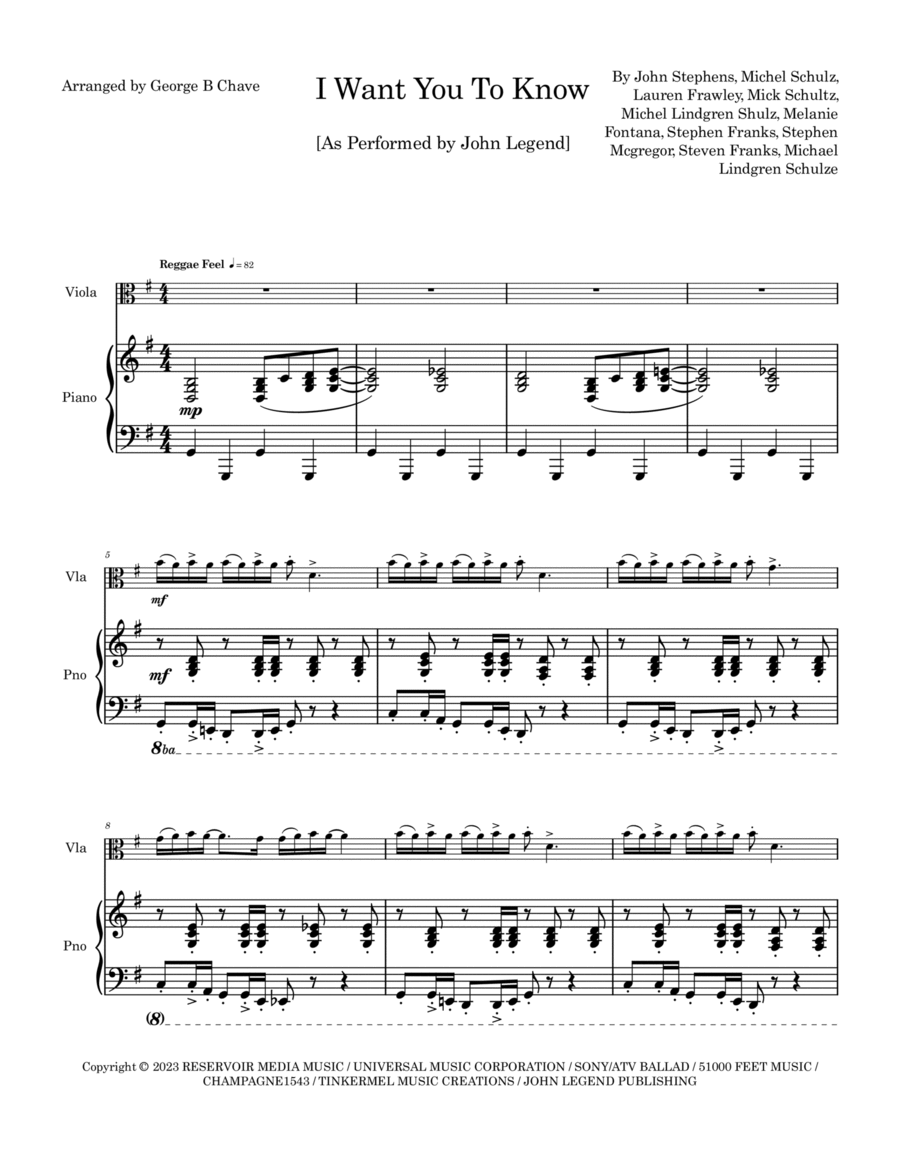Piano,Viola - Level 4 - Digital Download SKU: A0.1199017 By John Legend. By John Stephens, Lauren Frawley, Melanie Fontana, Michael Lindgren Schulze, Michel Lindgren Shulz, Michel Schulz, Mick Schultz, Stephen Franks, Stephen Mcgregor, and Steven Franks. Arranged by George B Chave. Chamber,Contemporary,Multicultural,Pop,Rock,World. Score and part. 7 pages. BrassMagicMusic.com #798088. Published by BrassMagicMusic.com (A0.1199017). This catchy Reggae-style piece, originally made famous by John Legend, features solo Viola with Piano Accompaniment geared toward the High School or advanced Middle School performer. Â It is in concert G-major. Â The viola range in this arrangement spans from written D4 to D5 [two ledger lines above the staff]. The diatonic nature of this arrangement (only 2 measures contain an accidental) and the range make this easily accessible to younger performers. There is, however, some syncopation in keeping with the original melody, but nothing out-of-reach for a competent performer. Â The piano accompaniment is reasonably simple: a somewhat active L.H. part with chord comping in the R.H.
